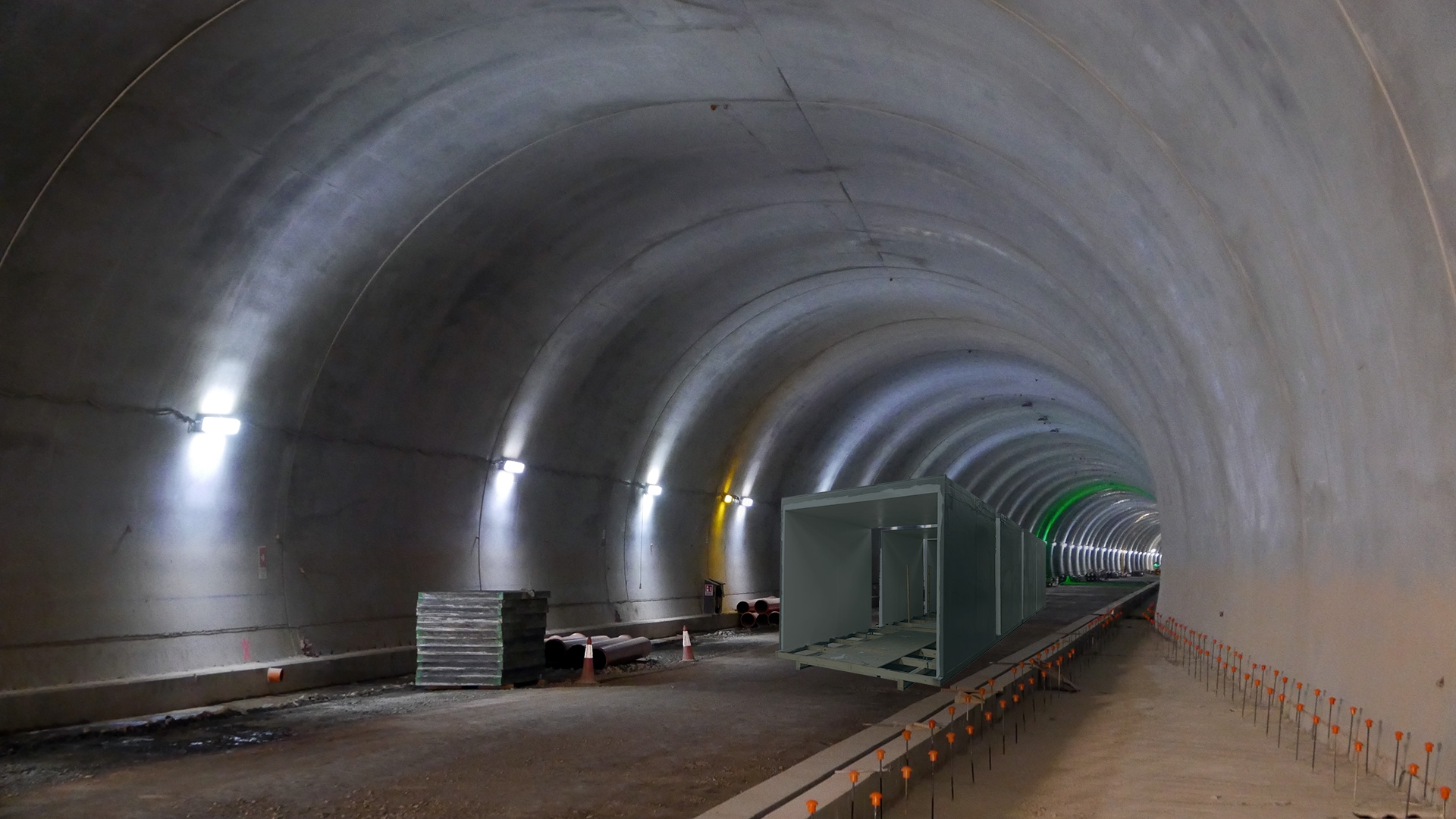Innovative construction materials in tunnels

The Foamrox products is an example of such solutions. This patented material combination, where the main part of the product consists of recycled glass, can replace some of today's concrete structures in tunnels. The Foamrox material is today used in several products, including fireproofed, isolated and light-weight emergency cabinets, technical rooms, firewalls, emergency tunnels and emergency stations - all of which are already on the market and in use in several tunnels. The material has the strength and fire safety properties of concrete but is significantly lighter (only 5-10% of concrete). A traditional concrete cabinet weighs up to 600 kg, while the cabinet in this material weighs 40 kg. It provides significant benefits in handling – a Health, Safety and Environment (HSE) promotion measure. The product is also easy to clean, maintain and replace, and has a longer life span than other materials. All in all, this results in large cost savings in both the investment and operation and maintenance of tunnels.
Tunnel construction and installations have often major weaknesses that affect reliability, availability, maintainability and safety of tunnels. Part of the problem is a lack of focus on innovation and missing out the opportunity to create further development by giving the contractors open function based descriptions. Standardised descriptions that give a clear opportunity to implement new and better solutions and materials in tunnels. And we should not forget that the society require the industry to consider the multiple potential impacts to human health and the environment throughout the life cycle — from product raw material extraction to manufacture through use and disposal.
As we know, standardisation facilitate innovation because it provides structured methods that makes it easier to disseminate ideas and knowledge about leading technologies and best practices. The effect of less attention to standardisation is that the tunnel owner had less attentions to new materials, innovative solutions and effective production, transport and installation. Further on we observe a missing focus on environmental friendly solutions.
Tunnels with weaknesses largely affect costs, lifespan of construction and installations, and in many cases give high socio-economic costs in terms of more frequent shutdowns and less available road network. In addition, weaknesses could significantly affect safety. It is important to apply new research, best practices and new technologies, and to facilitate research, development and standardisation, and improve how we build and operate tunnels. Projects with focus on use of new materials will have an important effect on the tunnel industry in general.
A common solution today are construction elements containing concrete, steel reinforcement and different kind of additives, necessary to fulfil certain requirements. In addition, the construction element need to have a certain shape, optimal for the cross section in a tunnel. When designing a traditional construction element the manufacturer need to limit the measurements, due to the high density of the materials and total weight of the element. These designs and materials are not necessary the best solutions for transport, installation and for the total life span of the tunnel.
In many cases, several projects have also observed not acceptable quality on the traditional concrete elements due to difficulties to maintain quality on the given designs, through production, transport and installation.
It is also important to use materials and methods of installation that lead to a more cost-effective construction of tunnels, and the environmental cost aspect is also important. In other words, it's a lot of considerations that affect what kind of solutions are best suited to construction elements in a tunnel. A challenge that need to be addressed to the industry, by facilitating innovation.
This is an important topic and will be followed up this fall with similar presentation of materials and products.

 En
En 




